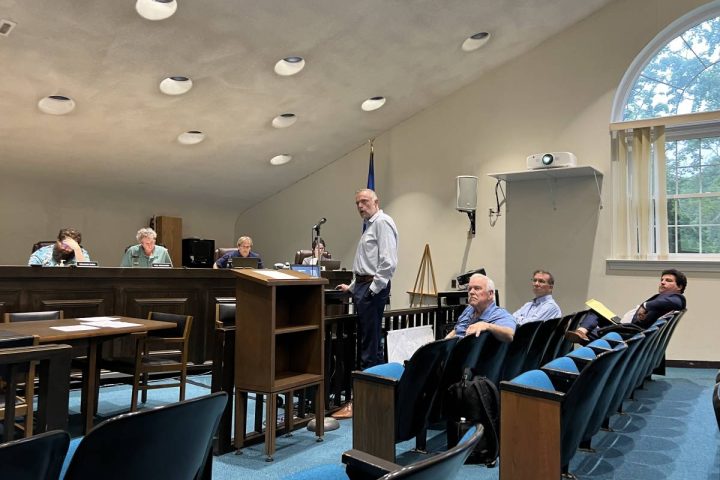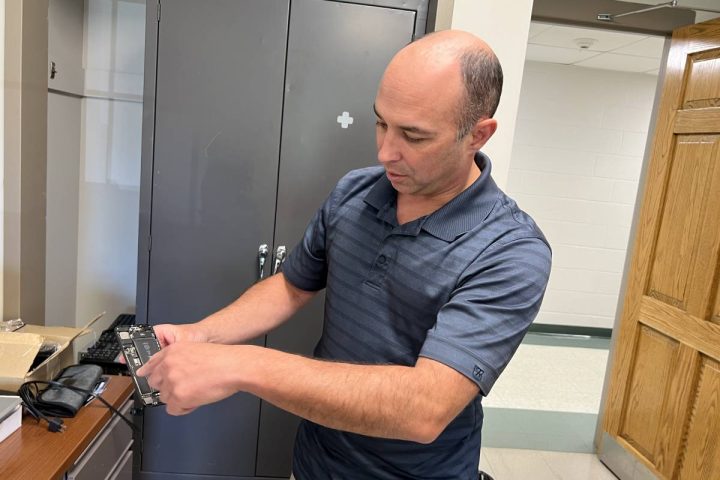MONROE, CT — Town zoning regulations have an open space requirement for subdivisions, which could increase the complexity or cost of the project to transform St. Jude School into a community center, some officials say.
To preserve a portion of the property as open space, the layout and setbacks may have to be reconfigured. If this makes the project unworkable, paying a fee in lieu of open space instead could cost taxpayers up to $1 million they say.
Town Attorney Frank Lieto told the Town Council delays in the project could also put grant money in jeopardy and First Selectman Terry Rooney said he received a verbal commitment for $750,000 from the state with help from State Rep. Tony Scott, R-Monroe.
One potential solution recommended by Lieto was for the Town Council to approve a resolution exempting municipal property from town zoning laws. Town Council Chairman Jonathan Formichella had drafted language in the motion for it to sunset after one year, since it would be something Monroe has not done before.
But when the Council held a hearing on April 23 several residents spoke against it, because they could not voice their concerns about town projects during a Planning and Zoning Commission hearing. Some Council members expressed the same concern and asked for more public input in the process.
Formichella withdrew the motion, while asking Lieto to do more research and Councilman Jason Maur asked if the Planning and Zoning Commission could be invited to a future meeting.
Lieto said, “my recommendation at this juncture, so as not to cause a further delay, is that this project should just move forward in the manner we were preparing to do before — prior to my recommendation to consider this —- and let Planning and Zoning hear and consider it, and figure out where to get a million dollars from.”
Lieto said it would be unfortunate if the Council does not approve the municipal land exemption, adding the town already lost significant time on the project.
“The project can move forward,” he said. “It just has to move forward under different parameters.”
Maur asked if the Council could approve something piecemeal that would only exempt municipal land from the open space requirement of the zoning regulations. But Lieto said Connecticut General Statute 8-2e is an all or nothing proposition, as some towns exempted municipal lands from all of it.
Lieto expressed concerns over setting a bad precedent, saying he did not want the Council to pass a resolution only exempting the open space portion of the regulations, which would make Monroe a guinea pig.
The town attorney said he discussed the issue with the town’s planning and zoning administrator, Kathleen Gallagher, who said if the municipal exemption was adopted, town projects would still be subject to review for building codes, inland wetlands regulations, fire codes, health codes, stormwater regulations, federal regulations (such as FEMA flood plain requirements), Connecticut Department of Energy and Environmental Protection regulations, and historic district regulations.
Town projects involving development, relocation of a road, abandonment of a property, or for location of utilities would still need a municipal referral from the Planning and Zoning Commission, in accordance with 8-24 of the Connecticut General Statutes.
If the commission gave a negative referral, Lieto said the Town Council could veto it with a two-thirds majority vote.
Among the concerns expressed at the hearing were how many town properties could be affected. Rooney said he did not have a chance to look into that yet.
One other potential impact mentioned by Gallagher was the Monroe Volunteer Emergency Medical Service’s proposal to put up a sign allowing the agency to communicate messages to the public. She said town sign regulations are strict and the EMS wants a sign that is larger than what is allowed.
If the town is temporarily exempt from its zoning regulations the EMS could have its sign approved without opening the door for commercial businesses to also apply for larger signs.
In the case of the EMS sign, Gallagher said a building permit would still be needed and it would still go through the process for a slight increase in size of sign.
Council members Janice Persico and Cathy Kohut both said they would not oppose the sign for EMS, but expressed concern that without a Planning and Zoning Commission hearing, neighboring residents could not speak on things such as how the lighting could shine onto their properties, input that could potentially impact upon what is approved.
Lieto said residents would still be able to share their concerns with the First Selectman’s Office, the town’s land use department and the Town Council.
Among residents’ concerns were giving up their First Amendment rights by not having zoning hearings, questions over why the Planning and Zoning Commission was not included in conversations about the proposal, and whether or not exempting municipal properties from zoning would open the door to more commercial development.
Lieto said the exemption would only apply to town owned land, not private properties. And Gallagher said she and the first selectman spoke to Planning and Zoning Chairman Michael O’Reilly, who took no exception to the proposal.
Though there were no formal discussions with the commission, she said there was some informal discussion.
After the hearing, Rooney noted that the Town Council is the only legislative body that could decide to exempt municipal property from the zoning regulations. He said he brought the proposal to the Council’s attention to spark discussion in an open process.
“I don’t expect everything to be approved,” Rooney said, “but if it is something that will streamline processes and make things more efficient and save taxpayers money, I believe it is my duty as first selectman to bring it to the Town Council.”
All respectful comments with the commenter’s first and last name are welcome.







The subdivision regulation requiring an open space dedication or fee in lieu of it, as purportedly authorized by state law, should be invalid as an unconstitutional taking under the US constitution, per Nollan v. California, 483 US 825 (1987) and Dolan v. Tigard, 512 US 374 (1994).
Also . . .
The open space or fee in lieu is a part of the town’s subdivision regulations. The statute that allows the town to exempt itself from its zoning regulations applies to zoning regulations – not subdivision regulations.
Thank you Paul, we need you back in Monroe!
I don’t understand where the $1 million fee in lieu amount came from. My understanding it that the fee in lieu is 10% of the land value before subdividing it. The town has that plot appraised at $1,713,500. The purchase price, according to a previous article, is $1,775,750. It seems to me, the fee in lieu shouldn’t be more than $177,575.
I believe the figure the 10% is supposed to be based on is the value of the land before subdivision, not including any buildings on it.